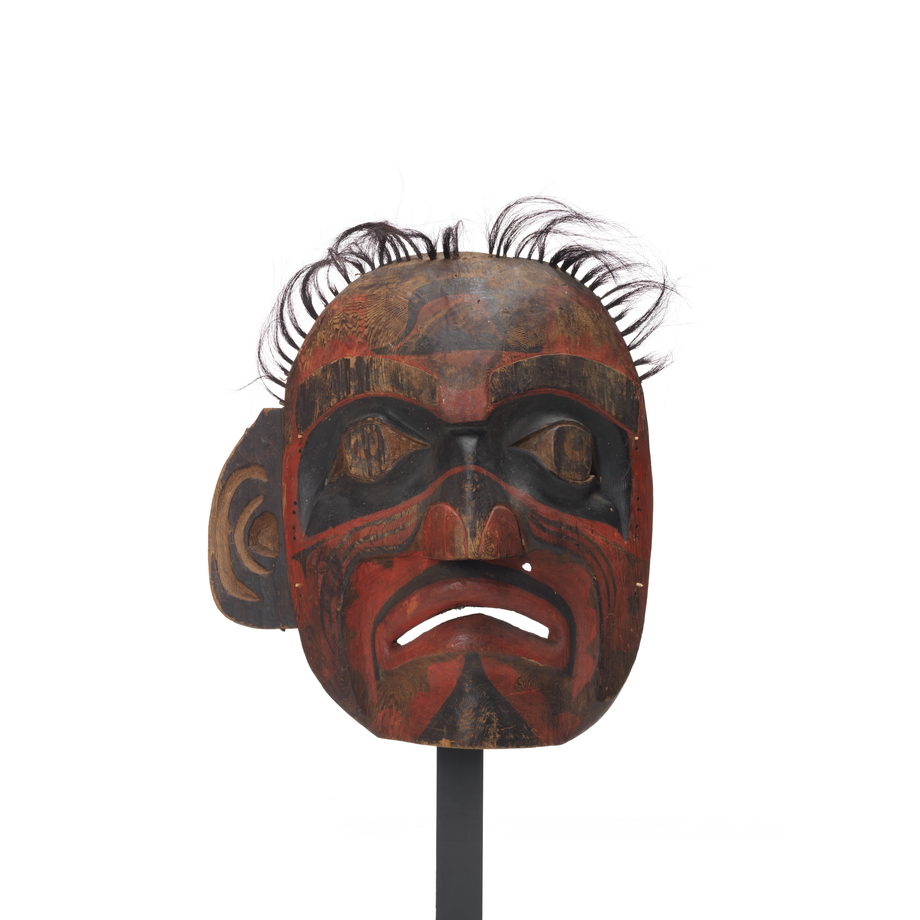Gwalkwamł
Deaf Man Mask
This dance mask represents the history of a man from the Mamalilikala. His family and fellow chiefs wanted him to uphold his chiefly position and host a feast. Because he would not listen to them, they felt that they had no choice but to kill him. This story is still told today through a dance that is performed by the families of his tribe. Look for the Deaf Man mask being danced in the film playing in this gallery.
Owner
Yekutłikalas, Sam Charlie, Mamalilikala (Village Island)
Creator
Mungo Martin
Catalogue Information
Provenance
Owned by Sam Charlie until its forced surrender to Indian Agent William Halliday on March 25, 1922. Halliday later displayed and photographed the seized pieces at the Parish Hall in Alert Bay. After doing an inventory, he crated the items in June, and at the end of September he shipped them to Edward Sapir at the National Museum of Man (now the Canadian Museum of History). They remained the property of the NMM until their repatriation by the U’mista and Nuyumbalees Cultural Societies in 1979. In 1995 Sam Charlie's daughter, Mary Beans (nee Charlie) requested her father's regalia be transferred from Nuyumbalees to U'mista for display.
Materials
Wood, Cedar; Hair, Horse; Fibre, Cotton; Metal; Paint
Dimensions
102.0 cm x 35.0 cm x 13.5 cm
Accession Number
95.03.010
Physical Description
Large, carved and painted humanoid face mask. Tufts of black horsehair on top of the head. A string zigzags between the metal staples on the inside, to be used as a head tie. 10 rusted staples on left inside of mask, 11 on the right. One big ear attached to left side of mask, the other ear lacking.
